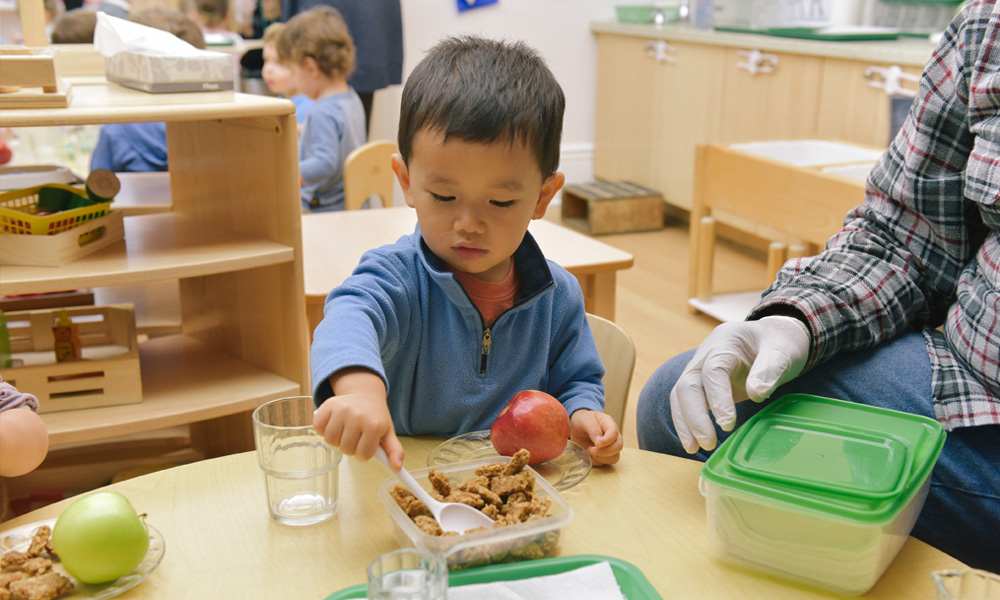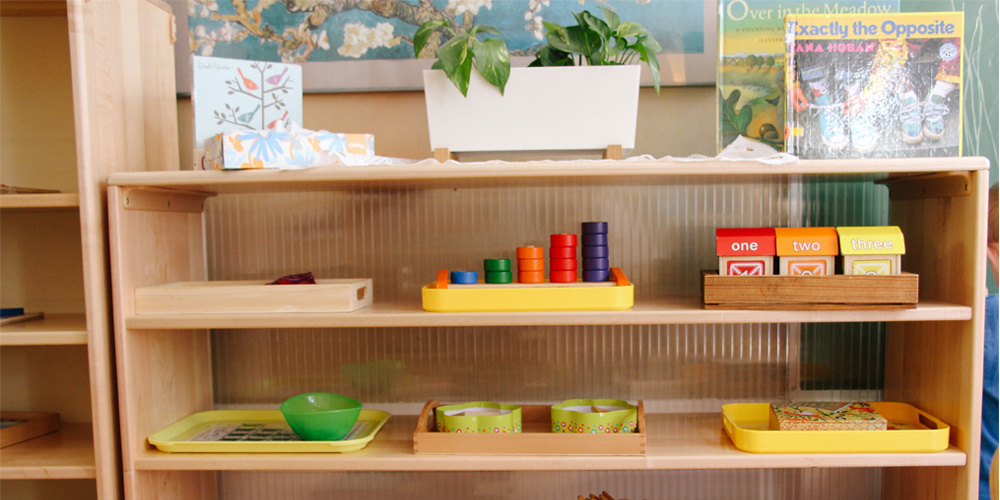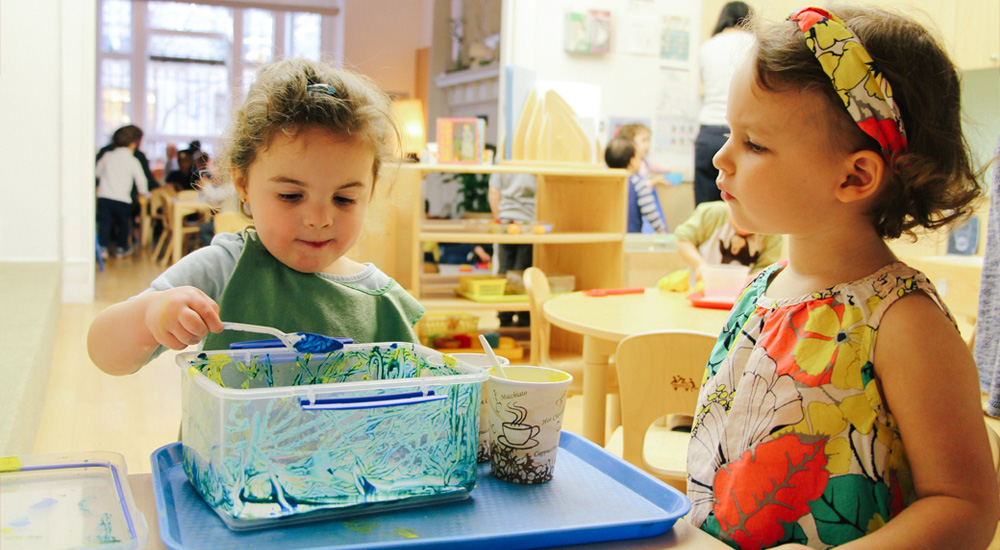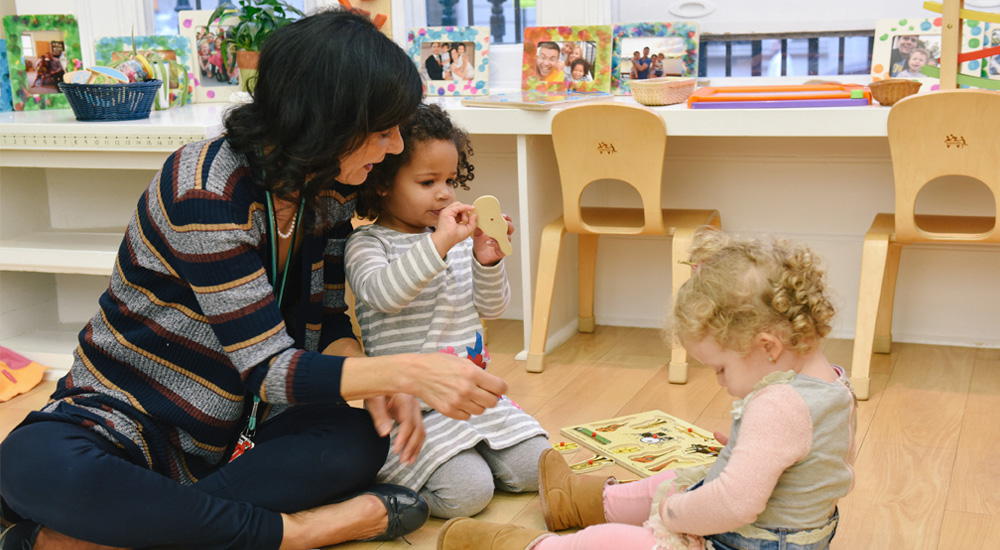Though the philosophy of West Side Montessori School and many aspects of environmental design and program design are consistent throughout the multi-age and Twos classrooms, there are some unique differences in our Twos program. Our Twos classroom contains Practical Life, Sensorial, beginning Math, and pre-literacy shelves. Additionally, all of our WSMS classrooms offer a well-developed art area, including an easel, prepared shelf works, and a supply of media and tools that are arranged cafeteria style for self-directed projects. Materials on every curriculum shelf are attractive, easily accessible, and thoughtfully and carefully designed by classroom teachers.
In WSMS classrooms, learning is an ongoing, dynamic process of self-construction within a social context. Teachers help children discover their own independence and self-care abilities. Environments are designed for children to gain mastery of food preparation and feeding. Teachers in both multi-age classrooms and the Twos program participate in mealtimes rather than simply monitoring feeding, model appropriate lessons of grace and courtesy and encourage conversation between children. Community is further established throughout the day during work time. Children are free to work together, and are not limited by a number dictated by teachers for each material. The bathroom environment is prepared to allow children as much independence in the process of toileting as possible.
The Twos classroom begins with a sparse offering of materials, many of which may be familiar to children from home. This assists children to find comfort in their new environment, as they navigate separation from parents and caregivers in the first days of school. Duplos, puzzles, and other small manipulatives dominate the offerings. Children are gently introduced to the process of preparing work for the next child by teacher direction and modeling. With this repetition, children become acclimated to the cycle of activity in the classroom; eventually, more multi-step activities and some materials that are included in the early childhood environments are introduced.
Music and movement are daily and integral parts of gathering times, offering an irresistible invitation to join together. Yoga cards are available as prompts for poses. An art project, such as large scale marble painting or exploring paint with your feet, might be offered for all children to explore over the course of a work period; the children are welcome to choose, or not choose, this activity throughout the day.
For the Twos, the peaceful classroom begins with the daily interaction of children in the environment. Their approach to the Montessori peace curriculum is organic: teachers observe, see a situation, and step in, if necessary, to guide or mediate. They provide language, assisting children to find the words to express their feelings appropriately. The children come to understand their own responsibility for their shared environment and the community as they are guided to return their materials to order for the next child’s use.







